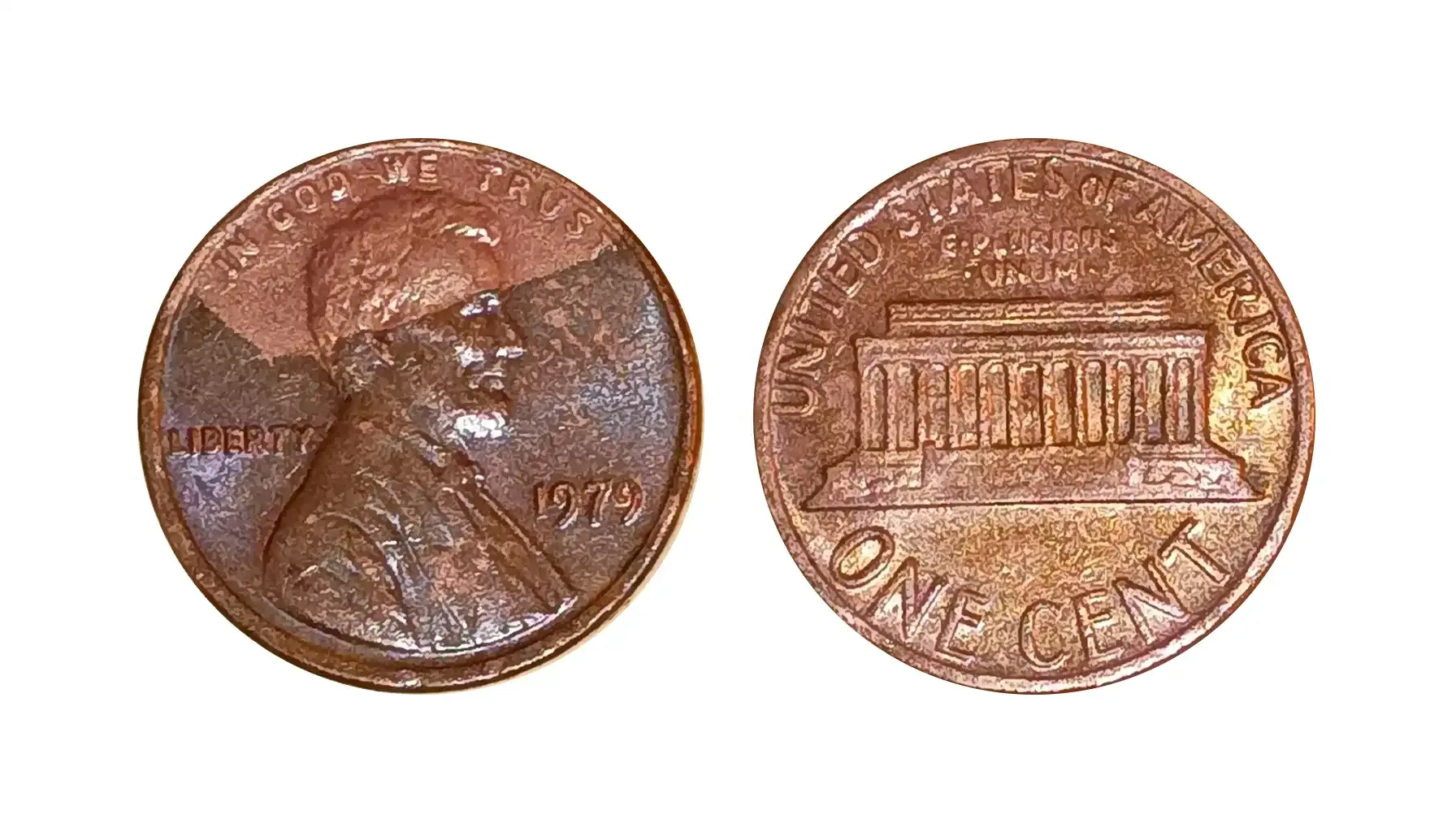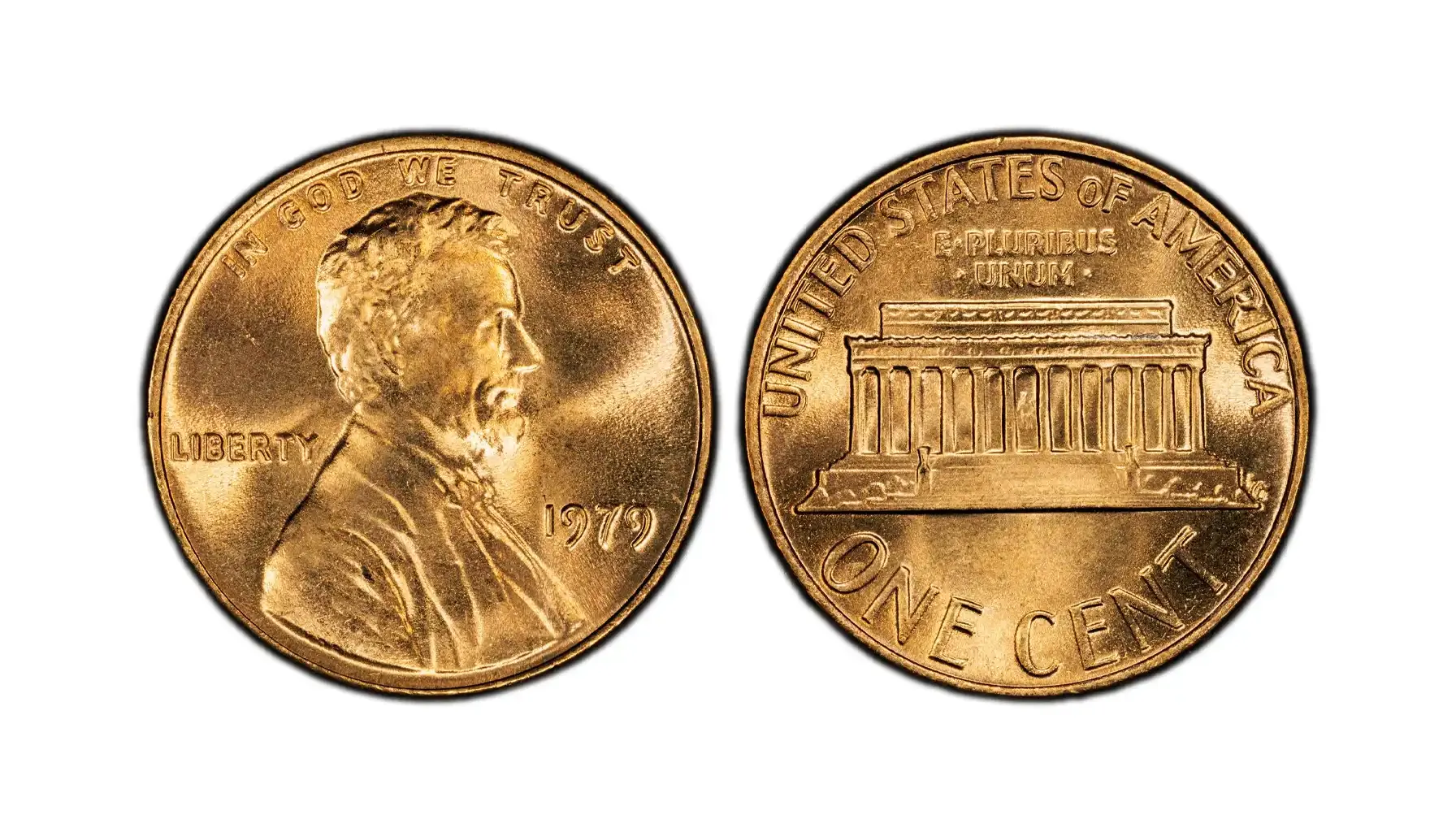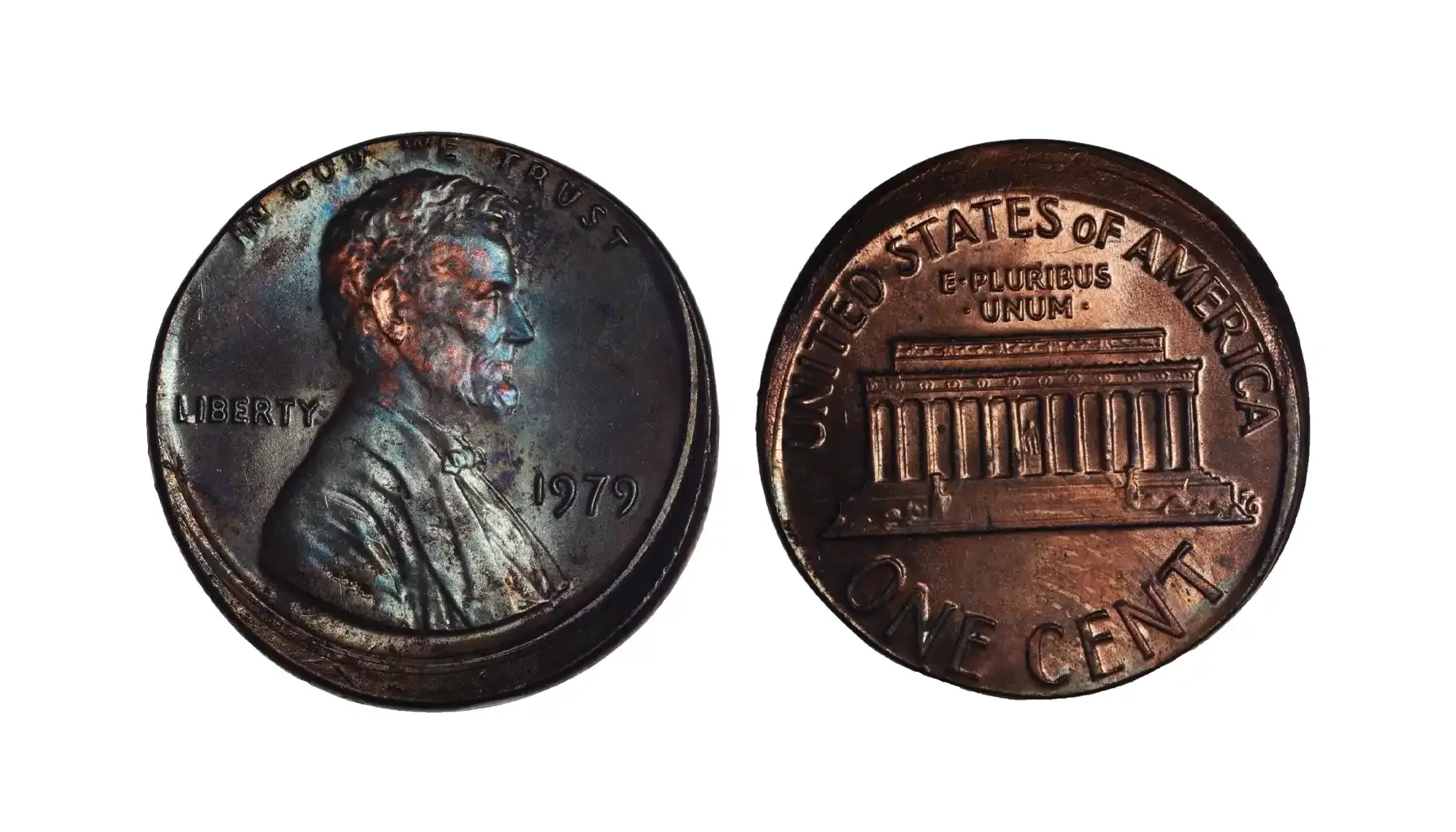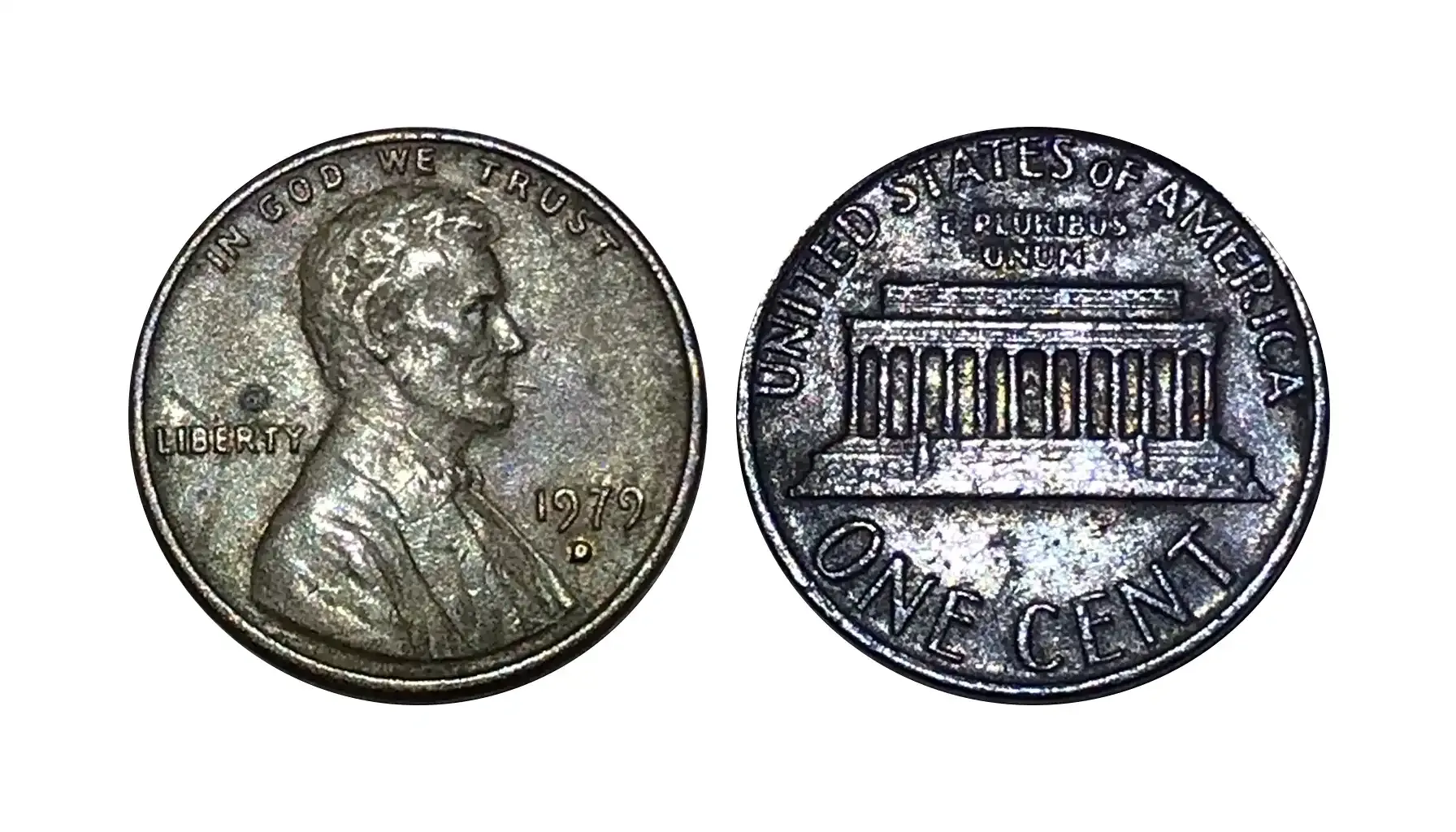Contents:
- Introduction to the 1979 Lincoln Memorial Penny
- Historical Context and Metal Composition
- Design Details and Specifications
- 1979 Penny Value Chart by Mint Mark and Grade
- Rare and Valuable 1979 Penny Error Coins
- How to Grade a 1979 Penny
- Where to Sell or Appraise Your 1979 Penny
- FAQs
- Final Thoughts
- Related Coin Value Guides:
Not every penny is just pocket change, especially when it comes to the 1979 Lincoln penny. Rising copper prices, proof varieties, and mint errors (like the one with a filled D), this coin has kept collectors interested. Are you checking your change or sorting through inherited coins? Look for the 1979 penny, because you might be holding a little treasure there! So what actually makes it special? Let’s talk about it.
If you need to check instantly if your coin is worth anything, there is a way. Try Coin ID Scanner, the app will give you an approximate info on value, year and any specialities of the coin.
Introduction to the 1979 Lincoln Memorial Penny

The 1979 penny might not be the flashiest coin in your change jar, but it’s got a little more about it going on than you might think. Most people toss these in a drawer or ignore them completely, but if you're a collector - or just like old coins - this one's worth a second look.
The 1979 penny is part of the Lincoln Memorial series, which ran from 1959 to 2008. On the front (the obverse), you’ve got good ol’ Abe Lincoln facing right, with “IN GOD WE TRUST” above his head and “LIBERTY” behind his shoulder - the classical combo. The date is just in front of his chest. Flip it over, and there’s the Lincoln Memorial on the back (the reverse), designed by Frank Gasparro. If you look closely, you can even see a tiny image of Lincoln’s statue between the columns - pretty cool detail for such a small coin.
Maybe you are into coins with lots of details? Check out the Hobo Nickels to add some to your collection.
Now, when we talk about the 1979 penny value, there are a few different versions out there. You’ve got the 1979 no mint mark penny from Philadelphia, the 1979-D penny from Denver, and then the proofs from San Francisco. Most of them are still only worth a cent unless they’re in pristine shape or have a quirky minting issue. There’s where the actual fun begins, because a tiny mistake you might not notice can actually be a sign that your penny is worth way more than just its face value.
Speaking of quirks, there’s a whole 1979 penny error list to keep in mind, double dies, off-center strikes, clipped planchets, you name it. Even the tiniest difference from the norm can turn a regular old coin into something people are willing to pay for.
So if you’ve got a handful of 1979 pennies sitting around, especially a shiny 1979 penny no mint mark or a nice red Denver one, you might want to check them a bit more closely.
Historical Context and Metal Composition
The 1979 penny came out at an interesting time in coin history. The U.S. Mint had been making Lincoln Memorial cents since 1959, but by the late ‘70s, the world went into turbulent times, both politically and financially. Copper prices were rising real fast, and making a one-cent coin was starting to cost more than a cent. Which is not really good in a capitalistic world.
That’s what makes 1979 kind of a turning point. The 1979 penny was still made from the traditional 95% copper and 5% zinc alloy, giving it that warm, hefty feel old-school collectors love. But the Mint was already looking for cheaper options. By 1982, they’d switched to mostly zinc coins with just a thin copper coating to save on production.
This change is also why some people (including novice collectors) get confused when they see a 1979 gold penny floating around. Why? Because those aren’t supposed to exist. The “silver” ones are usually plating experiments or school projects, and the “gold” ones are often novelty coins, either plated or altered after leaving the mint. They might look cool, but they’re not rare mint issues.
As copper prices rose, some people started hoarding these older pennies. And if you’ve got a red one, a 1979 red penny, that original mint luster can mean it’s worth a few bucks or more, especially in Mint State. So if you’re wondering how much is a 1979 penny worth, the answer really depends on the color, condition, and if it’s hiding any mint mistakes. Keep reading, because we’ll get into the juicy 1979 penny errors soon too.
Design Details and Specifications

The 1979 penny doesn’t look all that different from other Lincoln Memorial cents, but the devil is in the details! Especially when we’re talking about value. So let’s break it down.
On the obverse (that’s the heads side), you’ve got Abraham Lincoln facing right, with “IN GOD WE TRUST” arched above his head. “LIBERTY” is to the left, and the year, 1979, is stamped on the lower right. Depending on where the coin was minted, you’ll either see a little “D” (Denver), an “S” (San Francisco, for proofs), or nothing at all (1979 penny no mint mark, which usually means Philadelphia).
Then there’s the reverse, with the Lincoln Memorial, the whole building. You can even spot Lincoln’s statue sitting inside it if you’ve got good lighting and better eyesight. The words “UNITED STATES OF AMERICA” and “E PLURIBUS UNUM” (Out of many, one) run along the top, with “ONE CENT” at the bottom.
Specs-wise, the 1979 penny is 19.05 mm in diameter, weighs 3.11 grams, and has a smooth edge. It was engraved by Victor David Brenner (obverse) and Frank Gasparro (reverse).
Brenner’s initials “V.D.B.” are tucked subtly at the base of Lincoln’s bust, just above the shoulder. Why? Because why not.
Now about those mint marks. If you’ve got a 1979-D penny, check that “D!” Sometimes it looks mushy or completely filled in. That’s not a rare mint error—it’s a die issue, called a filled D, and while it's common, some collectors still find it interesting enough to set aside. A clean, clear D is what you typically want for grading purposes.
And no, there’s no official 1979 50 cent coin value connected to Lincoln pennies, but a lot of people believe their unique-looking cent is some kind of misprint or half-dollar hybrid. No, unfortunately it’s not. If your penny is unusually large, heavy, or oddly colored, get it checked, but temper expectations. Most are just novelty items or damage.
So whether it's a 1979 penny worth a few cents or a few hundred dollars, the details are what matter. Look closely and you might spot something others missed.
1979 Penny Value Chart by Mint Mark and Grade

If you're wondering what makes a 1979 penny rare, it mostly comes down to condition, mint mark, and any quirks or errors. Most 1979 pennies are still worth face value if they’re worn, but some higher-grade coins and proofs can be worth much more.
Who knows, maybe you have something legendary? Read This Lincoln Wheat Penny Could Be Worth $15 Million article.
Here’s a value breakdown by type and grade, so you can set realistic expectations:
Coin | MS 65 | MS 66+ | MS 67+ | MS 68 | PR 69 DCAM | PR 70 DCAM |
1979 No Mint Mark Penny | $18 | $55 | $275 | $2,650 | – | – |
1979-D Penny | $28 | $75 | $3,950 | – | – | – |
1979-S Filled-S Proof | – | – | – | – | $20 | $2,750 |
1979-S Clear-S Proof | – | – | – | – | $22 | $1,350 |
1979 no mint mark penny (mostly from Philadelphia) can sell for a few bucks in Mint State, and if you’ve got one in MS 68 Red, lucky you—it could be worth thousands.
A clean, sharp 1979-D penny also has potential, especially if it’s bright red and in MS 67+ or higher. The highest recorded sale was nearly $4,000.
For proof collectors, the 1979-S pennies come in two types: Filled-S and Clear-S. These tiny details can change the value big time. A Clear-S PR 70 Deep Cameo is less common and usually costs more than a Filled-S.
And just a reminder: there’s no official 1979 50 cent piece tied to Lincoln cents. If you’ve got one that looks “off,” double-check, chances are it's not a new denomination, but maybe a planchet or striking error, which we’ll get into next.
Rare and Valuable 1979 Penny Error Coins
Because of some unknown reasons people like paying way more for errors! These oddballs can get collectors excited. A rare 1979 penny error can turn a humble 1-cent coin into a valuable collectible. Here are the top errors you might spot in your change or collection:
Cud Break (Die Break). A cud break happens when a piece of the die cracks off, leaving a blob or raised lump of metal on the coin. A 1979 penny with a cud on the rim or devices is instantly more interesting. One example in MS64 Brown sold for over $1,000.
Struck Through Cap Die. This is a weird one. This happens when a previous coin sticks to the die, and then the die keeps striking more coins, leaving ghost-like impressions or faded designs. A 1979 penny struck through a cap die can be worth over $1,200, especially in AU or Mint State grades.
Deep Obverse Die Cap (1979-D Penny). This mistake looks like the coin has been cupped or bent inward. One 1979 filled D penny with this error sold for over $300.
Off-Center Strike. When the coin blank isn’t aligned properly, the design ends up off-center. The bigger the shift, and the more visible the date, the more it’s worth. A 1979-D penny that was off-center and triple clipped sold for around $129. A 25% and 85% off-center double strike went for $312 in MS66 RB.
If you sort pennies, don’t skin beat-up ones - they may cost quite a bit! Check for odd shapes, missing images, deep cups, or anything that just looks unusual. 1979 penny errors can be surprisingly valuable.
And remember, there’s no such thing as a 1979 no mint penny error per se, those were mostly made in Philadelphia and just didn’t get a mark.
Filled D and “FG” Missing – What to Know

So is a 1979 penny with no FG an error? Nah. It’s not a minting mistake, it’s just regular wear on a die. Sure, it may be an interesting detail to see, but collectors usually don’t pay extra for these. But if your 1979 penny filled D also has other legitimate 1979 D penny errors, then you’re in business.
Bottom line: the missing “FG” is just a quirk, but it’s not a rarity. If you’re looking for something truly collectible, focus on bold errors, pristine grades, or coins with dramatic color.
How to Grade a 1979 Penny
In 1979 Lincoln penny grading matters a lot. A 1-cent coin in pocket change condition might still be worth 1 cent. But that same coin in Mint State Red?
Grading uses the Sheldon Scale, which goes from 1 (completely worn) to 70 (flawless perfection). For circulated coins, grades like Good (G), Very Fine (VF), and About Uncirculated (AU) are common. The most malleable coins come from the Mint State (MS) which is 60+ on scale.
But for Lincoln pennies, unlike many other coins, color matters too.
RD (Red) – Bright, original copper luster. Most valuable.
RB (Red-Brown) – A mix of original red and brown toning, less valuable.
BN (Brown) – Fully toned; least valuable.
So, a 1979 penny D in MS65 Brown might be worth a few bucks, but that same coin in MS67 Red may cost hundreds, maybe even thousands, if you’re lucky.
If you’re not sure how to grade, start with side-by-side comparisons of PCGS-certified coins. And if your coin seems flawless with strong color and no marks, consider submitting it to a professional grading service. Especially if it’s a proof or has a possible error.
Here’s the difference in value (as of recent market data):
Filled S (Type 1): PR69 DCAM = ~$20, PR70 DCAM = ~$2,750
Clear S (Type 2): PR69 DCAM = ~$22, PR70 DCAM = ~$1,350
Why is the PR70 Clear S cheaper than the Filled S? Because of the most basic market law - more supply means lower value. More Clear S coins have survived in PR70 than Type 1, which is far less common in top condition.
If you’re sorting through proof sets, check for mintmarks. It could turn a standard 1979 steel penny-looking coin (plated or prooflike) into a new TV (for example), especially if the surfaces are flawless and Cameo contrast is strong.
Don’t forget—there’s no such thing as a real 1979 steel penny. If your coin is silver in color, it’s likely either a dime planchet error or a post-mint alteration.
Where to Sell or Appraise Your 1979 Penny
What to do if you want to turn your 1979 penny value into actual cash? Here’s what you may want to do with your 1979 no mint mark penny:
Online Marketplaces: eBay and Etsy are both great for selling to other collectors, especially if you already have a graded coin or good-quality photos. Be sure to research completed listings to set realistic prices.
Auction Houses: if your penny has been professionally graded and has an unusual error, an auction house like Heritage or Stack’s Bowers might be a better bet. You’ll reach serious collectors there. But only if you have something serious to offer. Don’t bother going with a coin worth a few dozen bucks. You’ll just waste your time.
Coin Dealers: local dealers can offer quick appraisals and sometimes cash on the spot. Bring a few coins, ask questions, and get a feel for how they price things. Don’t sell right away though, you may find better prepositions elsewhere.
Coin Shows: you can talk directly to dealers, get multiple appraisals, and maybe find a buyer interested in your exact error or variety. Check prices from different sources beforehand, just to be sure.
Before you sell, prep your coin. But never clean it yourself! Check its weight, photograph it well, and maybe compare it to known listings or grading examples.
FAQs
Is the 1979 penny copper?
Yes—unless it’s a weird mint error. Standard 1979 Lincoln pennies were made of 95% copper and 5% zinc. The change to zinc core coins didn’t happen until mid-1982.
Is a 1979 penny worth anything?
Most are worth face value, but some with mint errors or in top condition (like MS67+ Red) can sell for hundreds or even thousands. 1979-S proof pennies, especially with a clear “S,” are also in demand.
What is a filled D penny?
A 1979 D penny filled mint mark has a “D” that looks clogged or mushy. It’s usually just the result of a worn die, not a rare error. So it’s not especially valuable on its own.
Are 1979 error pennies rare?
Sure, especially big ones like off-center strikes, double strikes, or coins struck on the wrong planchet. These types from the 1979 penny error list can be worth from $100 to well over $1,000 and even more.
Final Thoughts
The 1979 Lincoln Memorial penny may not be the rarest cent in your change jar, but there is still a chance it’s worth more than its face value. Between the filled D, the proof clear-S vs. filled-S, and the range of cool error coins, this copper may still be interesting for coin collectors.
If you’re just getting started with coin collecting, the 1979 penny is a perfect coin to learn with. And who knows? That “worthless” old cent at the bottom of your drawer might just be worth a second look.
And if you didn’t find anything, don’t worry, perhaps read about Unexpected Wealth: 10 Coins to Look For in Pocket Change and keep looking.



